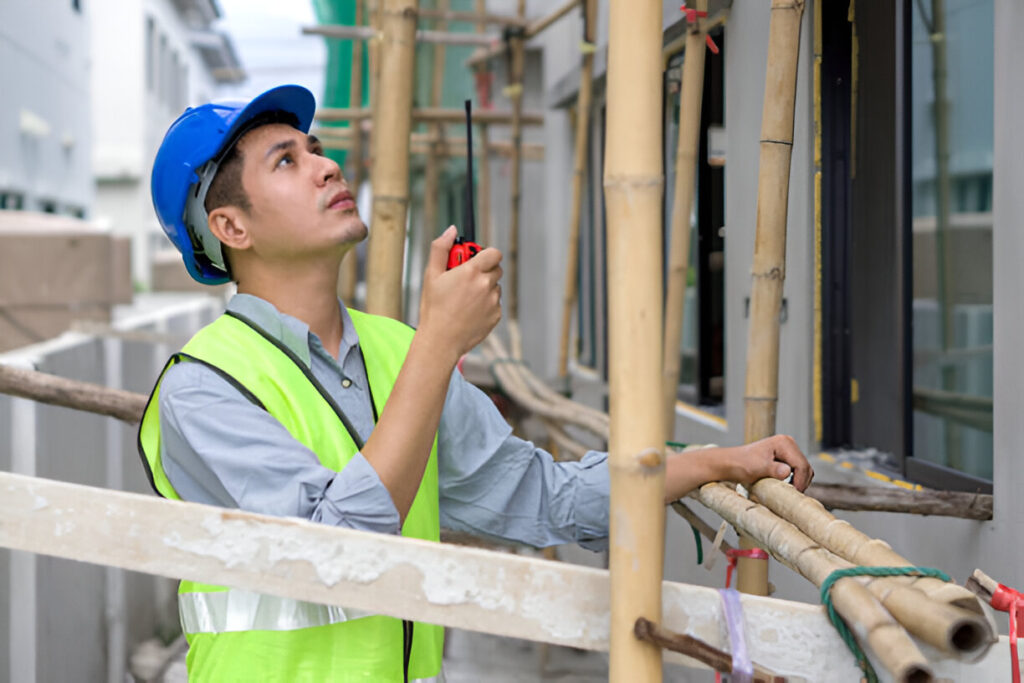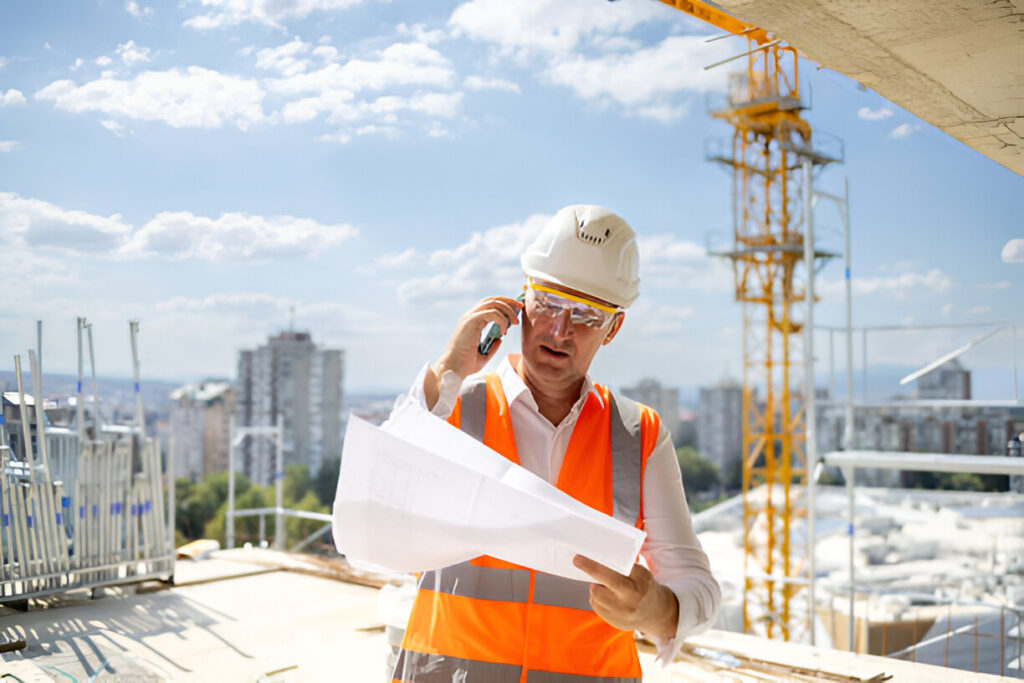
In New York City, ensuring scaffold safety is crucial for the well-being of workers and the public. Understanding who is authorized to inspect a scaffold in NYC is essential for compliance with local laws and regulations. This article explores the various regulations, roles, and responsibilities involved in scaffold inspections, as well as the necessary training and documentation required for safe scaffold use.
Key Takeaways
- Only a qualified person can inspect a scaffold before each shift and after any event that may affect its safety.
- A licensed rigger must supervise the use of suspended scaffolds, ensuring proper safety practices are followed.
- Training programs for scaffold inspectors are mandatory, including a certification process and ongoing education.
- Different types of inspections, such as pre-shift and installation inspections, are essential for maintaining scaffold safety.
- Documentation of inspections is crucial, including reports and records that must be maintained for compliance.
Understanding Scaffold Inspection Regulations in NYC

Overview of NYC Scaffold Laws
In New York City, scaffold inspections are crucial for ensuring safety on construction sites. According to the NYC scaffolding law, all types of scaffolds, including suspended and supported scaffolds, must be inspected daily before each use. This inspection is essential to confirm that the scaffold is safe for workers. The results of these inspections must be documented in a log that is kept on site.
Importance of Compliance
Compliance with scaffold inspection regulations is vital for several reasons:
- Worker Safety: Ensures that all scaffolds are safe for use, reducing the risk of accidents.
- Legal Requirements: Adhering to the NYC OSHA requirements helps avoid legal penalties.
- Public Safety: Protects the public from potential hazards associated with unsafe scaffolding.
Penalties for Non-Compliance
Failing to comply with scaffold inspection regulations can lead to serious consequences, including:
- Fines: Significant monetary penalties for violations.
- Work Stoppage: Immediate halting of work until compliance is achieved.
- Legal Action: Potential lawsuits from injured parties or regulatory bodies.
It is essential for construction companies to prioritize scaffold safety to avoid these penalties and ensure a safe working environment.
By understanding and adhering to these regulations, construction teams can maintain a safe and compliant worksite in the bustling environment of scaffolding in New York City.
Roles and Responsibilities in Scaffold Inspection
Competent Person Requirements
A competent person is someone who has the necessary training and experience to identify hazards related to scaffold use. This person must:
- Be present at the site during scaffold use.
- Have the authority to take corrective actions if safety issues arise.
- Complete required training programs to ensure they understand scaffold safety regulations.
Licensed Rigger Duties
A licensed rigger plays a crucial role in the safe setup and use of scaffolds. Their responsibilities include:
- Ensuring that all rigging equipment is in good condition.
- Overseeing the installation of scaffolds to meet safety standards.
- Communicating with the scaffold controlling entity about any safety concerns.
Scaffold Controlling Entity Obligations
The scaffold controlling entity is responsible for the overall safety and compliance of scaffold operations. Their obligations include:
- Conducting pre-shift inspections to verify that scaffolds are safe for use.
- Keeping detailed records of inspections and maintenance.
- Providing proper training to all personnel involved in scaffold operations.
It is essential to inspect the scaffold using a checklist or mobile inspection app before the work shift. This ensures that all safety measures are in place and that workers are protected from potential hazards.
Training and Certification for Scaffold Inspectors
Required Training Programs
To ensure safety, all scaffold inspectors must complete specific training programs. These programs cover essential topics such as:
- Supported scaffold safety
- Recognizing hazards associated with scaffolds
- Proper inspection techniques
For example, the 4-hour supported scaffold user & refresher course explains the basic elements of supported scaffold safety and introduces students to the nature of supported scaffold hazards.
Certification Process
After completing the training, individuals must pass an evaluation to receive their certification. This process includes:
- A written performance evaluation for programs longer than 4 hours.
- A hands-on performance evaluation for courses lasting 16 hours or more.
- Issuance of a wallet-sized certificate card that must be presented upon request.
Continuing Education Requirements
To maintain their certification, scaffold inspectors must participate in ongoing education. This includes:
- Retaking the initial training every four years.
- Completing refresher courses as required.
- Staying updated on new regulations and safety practices.
Scaffold safety is crucial for preventing accidents and ensuring a safe working environment. Regular training and certification help maintain high safety standards in the industry.
Types of Scaffold Inspections

Pre-Shift Inspections
Before each work shift, scaffolds must undergo a pre-shift inspection. This is crucial to ensure that the scaffold is safe for use. The inspection should be performed by a competent person who checks:
- All components of the scaffold
- Attachments to the scaffold
- Supports and anchorages
Installation Inspections
When a scaffold is installed, it must be inspected to confirm it is safe. This inspection is done by a qualified person who checks:
- That the scaffold is built according to design plans.
- All parts are in good condition.
- The installation is secure and stable.
Periodic Inspections
Scaffolds should also be inspected periodically to ensure ongoing safety. These inspections can be scheduled based on:
- The type of work being done
- Weather conditions
- Any changes made to the scaffold
Regular inspections are essential to maintain safety on construction sites. Following OSHA scaffolding inspection requirements helps prevent accidents and ensures compliance with regulations.
In summary, understanding the different types of scaffold inspections—pre-shift, installation, and periodic—is vital for ensuring safety and compliance. Knowing who is authorized to inspect a scaffold and how often should a scaffold be inspected can help avoid serious violations and penalties.
Documentation and Reporting for Scaffold Inspections

Pre-Shift Inspection Reports
Before each work shift, a competent person must inspect the scaffold to ensure it is safe for use. This inspection is crucial after any event that might affect the scaffold’s stability. The findings must be recorded in a pre-shift inspection report, which should be signed and dated by the inspector. This report is essential for maintaining safety standards.
Installation Inspection Documentation
When a scaffold is installed, it must undergo a thorough inspection. The results of this inspection are documented in an installation inspection report. This report must also be signed and dated by the inspector. The scaffold cannot be used until this report is completed and confirms that the scaffold is safe.
Maintaining Inspection Records
Keeping accurate records of all inspections is vital. Here are some key points to remember:
- All inspection reports should be stored securely.
- Records must be accessible for review by relevant authorities.
- Documentation should include details of any repairs or adjustments made to the scaffold.
Proper documentation and reporting are essential for ensuring the safety of scaffolding in construction. Scaffolding is crucial in construction, providing safe access to heights.
| Inspection Type | Required Documentation | Frequency |
|---|---|---|
| Pre-Shift Inspection | Pre-Shift Inspection Report | Before each shift |
| Installation Inspection | Installation Inspection Report | After installation |
| Periodic Inspections | Periodic Inspection Report | As required |
Safety Measures and Best Practices for Scaffold Use

Safe Working Order
To ensure safety, all scaffolds must be in safe working order. This means:
- All parts of the scaffold should be free from defects.
- Any damaged or weakened parts must be repaired immediately.
- Scaffolds should not be used until they have been inspected after repairs.
Load and Capacity Requirements
Scaffolds must be able to support their own weight plus additional loads. Here are some key points:
- Each scaffold should support at least four times the maximum intended load.
- Loads should be evenly distributed to avoid stressing the scaffold.
- Always check the manufacturer’s guidelines for specific load limits.
Emergency Procedures
In case of an emergency, it’s crucial to have clear procedures in place:
- Workers should know how to safely evacuate the scaffold.
- Emergency contact numbers should be posted visibly.
- Regular drills should be conducted to ensure everyone knows what to do in an emergency.
Remember: Safety is everyone’s responsibility. Regular inspections and adherence to guidelines can prevent accidents and injuries.
Summary Table of Scaffold Safety Measures
| Safety Measure | Description |
|---|---|
| Safe Working Order | Ensure all parts are defect-free and repaired. |
| Load Capacity | Support at least four times the intended load. |
| Emergency Procedures | Have clear evacuation and contact plans. |
Common Violations and How to Avoid Them
Frequent Safety Violations
In New York City, scaffold safety is crucial. Here are some common violations:
- Improperly secured scaffolds: Scaffolds must be firmly anchored to prevent tipping.
- Lack of guardrails: Every scaffold over 10 feet high should have guardrails to protect workers.
- Inadequate inspections: Regular inspections are necessary to ensure safety and compliance.
Tips for Compliance
To avoid violations, consider these tips:
- Conduct daily inspections: Always check scaffolds before use.
- Train workers: Ensure all workers understand scaffold safety rules.
- Document everything: Keep records of inspections and training sessions.
Case Studies of Violations
Learning from past mistakes can help prevent future issues. Here are a few examples:
- A construction site was fined for not having guardrails, leading to a worker’s fall.
- Another site faced penalties for using a scaffold that was not inspected properly, resulting in a collapse.
- A company was cited for failing to secure scaffolds, causing a dangerous situation for workers.
Remember, safety is everyone’s responsibility. Regular training and inspections can help keep everyone safe on the job.
Choose Apex for Reliable Scaffold Work in NYC
When it comes to scaffold services in NYC, Apex provides dependable solutions for all your construction needs. From setting up secure, stable scaffolds to ensuring compliance with safety standards, our skilled team is ready to handle every aspect of your scaffold work. With a commitment to safety, reliability, and efficiency, Apex is your trusted partner in creating a secure work environment.
Stay connected with us on Facebook and Instagram to see our latest projects and learn more about how we can support your scaffold needs.
Frequently Asked Questions
Who is allowed to inspect scaffolds in New York City?
Only a qualified person, like a licensed rigger or a competent person, can inspect scaffolds in NYC.
What must be checked during a scaffold inspection?
During an inspection, the scaffold's structure, supports, and attachments must be examined to ensure they are safe.
How often should scaffolds be inspected?
Scaffolds need to be inspected before each shift and after any event that might affect their safety.
What happens if a scaffold fails inspection?
If a scaffold does not pass inspection, it cannot be used until it is fixed and re-inspected.
Are there any penalties for not following scaffold inspection rules?
Yes, there can be fines and other penalties for not complying with scaffold inspection regulations.
What training is required for scaffold inspectors?
Scaffold inspectors must complete specific training programs and keep their certifications up to date.
